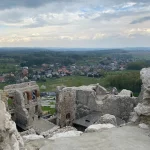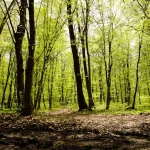
Discovering the Beauty and Charm of Bordeaux, France: A Journey Through Wine Country

Introduction to Bordeaux: The Heart of French Wine Country
Bordeaux, located in the southwest of France, is often referred to as the heart of French wine country. With its rich history, diverse wine regions, and world-renowned châteaux, Bordeaux is a must-visit destination for wine lovers from around the globe.
Bordeaux has been producing wine for centuries and is known for its exceptional quality and variety. The region is home to over 7,000 vineyards and produces some of the most prestigious wines in the world. Bordeaux wines are known for their complexity, elegance, and ability to age gracefully.
In addition to its wine production, Bordeaux is also a beautiful and vibrant city with a rich cultural heritage. The city itself is a UNESCO World Heritage site, with its stunning architecture, charming streets, and lively atmosphere. Visitors can explore historic sites, museums, art galleries, and enjoy the local cuisine and vibrant nightlife.
The History of Bordeaux: A Rich and Colorful Past
The history of Bordeaux dates back to Roman times when the region was known as Burdigala. Over the centuries, Bordeaux has been influenced by various cultures and civilizations, including the Romans, Vikings, English, and Dutch. Each of these influences has left its mark on the region’s wine production.
One of the key factors that shaped Bordeaux’s wine industry was the establishment of the Bordeaux wine trade in the 12th century. The trade routes established by the merchants of Bordeaux allowed the region’s wines to be exported to markets around Europe. This trade network helped establish Bordeaux as a major player in the global wine market.
During the 18th century, Bordeaux experienced a golden age of wine production. The region’s wines became highly sought after by European nobility and were often referred to as “the wines of kings.” This period saw significant advancements in winemaking techniques and the establishment of many of Bordeaux’s iconic châteaux.
Exploring the Vineyards: A Guide to Bordeaux’s Wine Region
Bordeaux is divided into several distinct wine regions, each with its own unique characteristics and terroir. The main regions include the Left Bank, the Right Bank, and the Entre-Deux-Mers.
The Left Bank is known for its prestigious châteaux and is home to some of Bordeaux’s most famous wines, including those from the Médoc and Graves appellations. The wines from this region are typically made from Cabernet Sauvignon grapes and are known for their structure, power, and aging potential.
The Right Bank is known for its Merlot-dominated wines, particularly those from the Saint-Émilion and Pomerol appellations. These wines are often described as being more approachable and fruit-forward compared to those from the Left Bank.
The Entre-Deux-Mers region, located between the Garonne and Dordogne rivers, produces a wide range of wines, including both reds and whites. This region is known for its dry white wines made from Sauvignon Blanc and Sémillon grapes.
When planning a vineyard tour in Bordeaux, it’s important to consider the size of the region and the number of vineyards you want to visit. It’s also worth noting that many châteaux require advance reservations for tours and tastings, especially during peak tourist season.
Wine Tasting in Bordeaux: The Best Châteaux to Visit
Bordeaux is home to hundreds of châteaux that offer wine tastings and tours to visitors. Here are some of the top châteaux to visit for a memorable wine tasting experience:
1. Château Margaux: Located in the Médoc region, Château Margaux is one of Bordeaux’s most prestigious estates. Known for its elegant and refined wines, a visit to Château Margaux is a must for any wine lover.
2. Château Haut-Brion: Situated in the Graves appellation, Château Haut-Brion is one of the oldest and most respected wine estates in Bordeaux. The wines produced here are known for their complexity, depth, and aging potential.
3. Château Cheval Blanc: Located in the Saint-Émilion appellation on the Right Bank, Château Cheval Blanc is famous for its exceptional Merlot-based wines. A visit to this château offers a chance to taste some of Bordeaux’s finest red wines.
4. Château d’Yquem: Known for its legendary sweet wines, Château d’Yquem is located in the Sauternes appellation. The wines produced here are made from botrytized grapes and are considered some of the best dessert wines in the world.
When visiting a château for a wine tasting, it’s important to come prepared. Be sure to make a reservation in advance, dress appropriately, and be respectful of the winery’s rules and regulations. During the tasting, take your time to savor each wine and ask questions to learn more about the winemaking process.
The Art of Winemaking: A Behind-the-Scenes Look at Bordeaux’s Vineyards
Winemaking in Bordeaux is a complex and intricate process that requires skill, patience, and attention to detail. The region’s winemakers take great pride in their craft and strive to produce wines that reflect the unique characteristics of their terroir.
The winemaking process begins in the vineyard, where careful attention is paid to vineyard management practices such as pruning, canopy management, and pest control. The grapes are harvested by hand or machine, depending on the vineyard’s practices and the desired style of wine.
Once the grapes are harvested, they are sorted and destemmed before being crushed or pressed. The juice is then fermented in stainless steel tanks, oak barrels, or a combination of both. The length and temperature of fermentation can vary depending on the desired style of wine.
After fermentation, the wine is aged in oak barrels for a period of time to develop complexity and flavor. This aging process can range from a few months to several years, depending on the wine and the winemaker’s preferences.
The final step in the winemaking process is bottling and labeling the wine. This is done with great care to ensure that the wine is properly sealed and labeled according to legal requirements.
Terroir, which refers to the combination of soil, climate, and vineyard location, plays a crucial role in Bordeaux’s winemaking. Each vineyard has its own unique terroir, which influences the flavor, aroma, and structure of the wine. The region’s diverse terroir is one of the reasons why Bordeaux wines are so highly regarded.
Beyond Wine: Discovering the Cultural Treasures of Bordeaux
While Bordeaux is primarily known for its wine production, the region also offers a wealth of cultural attractions for visitors to explore. From museums and historic sites to art galleries and theaters, there is something for everyone in Bordeaux.
One of the must-visit cultural attractions in Bordeaux is the Musée d’Aquitaine, which showcases the history and culture of the region. The museum houses a vast collection of artifacts, including archaeological finds, works of art, and historical documents.
Another popular attraction is the Cité du Vin, a state-of-the-art museum dedicated to the history and culture of wine. Visitors can explore interactive exhibits, attend wine tastings and workshops, and enjoy panoramic views of Bordeaux from the museum’s rooftop.
For art enthusiasts, the Musée des Beaux-Arts is a must-visit. The museum houses an impressive collection of European paintings, sculptures, and decorative arts from the 16th to the 20th century.
In addition to its cultural attractions, Bordeaux is also home to a vibrant culinary scene. The city boasts numerous Michelin-starred restaurants, cozy bistros, and lively food markets where visitors can sample the region’s delicious cuisine.
Dining in Bordeaux: The Best Restaurants for Wine and Food Pairings
Bordeaux is known for its exceptional food and wine pairings, and there are plenty of restaurants in the region that offer a memorable dining experience. Here are some of the top restaurants in Bordeaux for wine and food pairings:
1. Le Chapon Fin: Located in the heart of Bordeaux, Le Chapon Fin is one of the city’s oldest and most prestigious restaurants. The menu features classic French dishes with a modern twist, and the extensive wine list offers a wide selection of Bordeaux wines.
2. La Tupina: This rustic bistro is a favorite among locals and visitors alike. The menu focuses on traditional regional cuisine, with dishes such as duck confit, foie gras, and grilled meats. The wine list features a variety of local wines from Bordeaux and the surrounding regions.
3. L’Entrecôte: Known for its steak frites, L’Entrecôte is a popular choice for meat lovers. The restaurant offers a fixed menu that includes a salad, steak with a secret sauce, and unlimited fries. The wine list features a selection of Bordeaux wines that pair well with the steak.
When dining in Bordeaux, it’s important to consider the local cuisine and how it pairs with the region’s wines. Bordeaux is known for its rich and hearty dishes, such as duck, lamb, and beef, which pair well with the full-bodied red wines produced in the region.
Accommodations in Bordeaux: Where to Stay for a Memorable Wine Country Experience
Bordeaux offers a wide range of accommodations to suit every budget and preference. From luxury hotels and charming bed and breakfasts to vacation rentals and campgrounds, there is something for everyone in Bordeaux.
If you’re looking for a luxury experience, there are several five-star hotels in Bordeaux that offer top-notch amenities and services. These hotels often have their own wine cellars and offer wine tastings and tours to guests.
For a more intimate experience, consider staying at a bed and breakfast or guesthouse in the countryside. These accommodations often offer a more personalized experience and are a great way to immerse yourself in the local culture.
If you prefer a self-catering option, there are plenty of vacation rentals available in Bordeaux and the surrounding areas. These rentals range from cozy apartments in the city center to spacious villas in the countryside.
For those who enjoy camping, there are several campgrounds in Bordeaux that offer facilities for tents, caravans, and motorhomes. These campgrounds are often located near vineyards and offer a unique opportunity to experience the region’s natural beauty.
When choosing accommodations in Bordeaux, it’s important to consider your needs and preferences. Factors to consider include location, amenities, price, and proximity to vineyards and other attractions.
Day Trips from Bordeaux: Exploring the Surrounding Countryside
While Bordeaux itself offers plenty to see and do, there are also many day trips that can be taken from the city to explore the surrounding countryside. Here are some of the best day trips from Bordeaux:
1. Saint-Émilion: Located just 40 kilometers east of Bordeaux, Saint-Émilion is a picturesque medieval town known for its vineyards and historic sites. Visitors can explore the town’s narrow streets, visit its underground catacombs, and enjoy wine tastings at local châteaux.
2. Arcachon: Situated on the Atlantic coast, Arcachon is a popular seaside resort known for its beautiful beaches and oyster farming. Visitors can take a boat trip to the nearby Dune du Pilat, the tallest sand dune in Europe, and enjoy fresh seafood at one of the town’s many restaurants.
3. Médoc: Located on the Left Bank of the Gironde estuary, the Médoc region is known for its prestigious châteaux and world-class wines. Visitors can drive along the famous Route des Châteaux, stopping at vineyards along the way for tastings and tours.
4. Dordogne Valley: Located to the east of Bordeaux, the Dordogne Valley is known for its stunning landscapes, medieval castles, and prehistoric caves. Visitors can explore the charming towns of Sarlat and Rocamadour, visit the Lascaux caves, and enjoy outdoor activities such as canoeing and hiking.
When planning a day trip from Bordeaux, it’s important to consider transportation options. Many of these destinations can be reached by train or bus, while others may require a rental car or organized tour.
Planning Your Trip to Bordeaux: Tips for a Successful Wine Country Journey
Planning a trip to Bordeaux can be overwhelming, but with some careful planning and preparation, you can create a memorable wine country experience. Here are some tips to help you make the most of your trip:
1. Choose the right time to visit: The best time to visit Bordeaux is during the spring and fall when the weather is mild and the vineyards are in full bloom. Avoid visiting during the peak tourist season in July and August when prices are higher and attractions are more crowded.
2. Consider transportation options: Bordeaux has a well-connected transportation network, including trains, buses, and trams. Consider renting a car if you plan on exploring the surrounding countryside or taking day trips.
3. Pack appropriately: Bordeaux’s weather can be unpredictable, so it’s important to pack layers and be prepared for all types of weather. Don’t forget to pack comfortable shoes for walking and a reusable water bottle to stay hydrated during vineyard tours.
4. Make reservations in advance: Many châteaux in Bordeaux require advance reservations for tours and tastings, especially during peak tourist season. Be sure to book your visits in advance to secure your spot.
5. Take your time: Bordeaux is a region that is meant to be savored and enjoyed at a leisurely pace. Take your time to explore the vineyards, savor the wines, and immerse yourself in the local culture.
By following these tips, you can ensure that your trip to Bordeaux is a success and that you have a memorable wine country experience. Whether you’re a wine lover, history buff, or culture enthusiast, Bordeaux has something for everyone to enjoy.
If you’re a fan of Bordeaux, France, you’ll definitely want to check out this article on Destination Mate about the wonders of Sweden. From the stunning landscapes to the rich history and culture, Sweden offers a unique and unforgettable travel experience. Whether you’re exploring the vibrant city of Stockholm or venturing into the picturesque countryside, there’s something for everyone in this Scandinavian gem. So pack your bags and get ready to embark on an adventure like no other! Read more
Recent Posts


Discovering the Beauty of Marshall Islands
